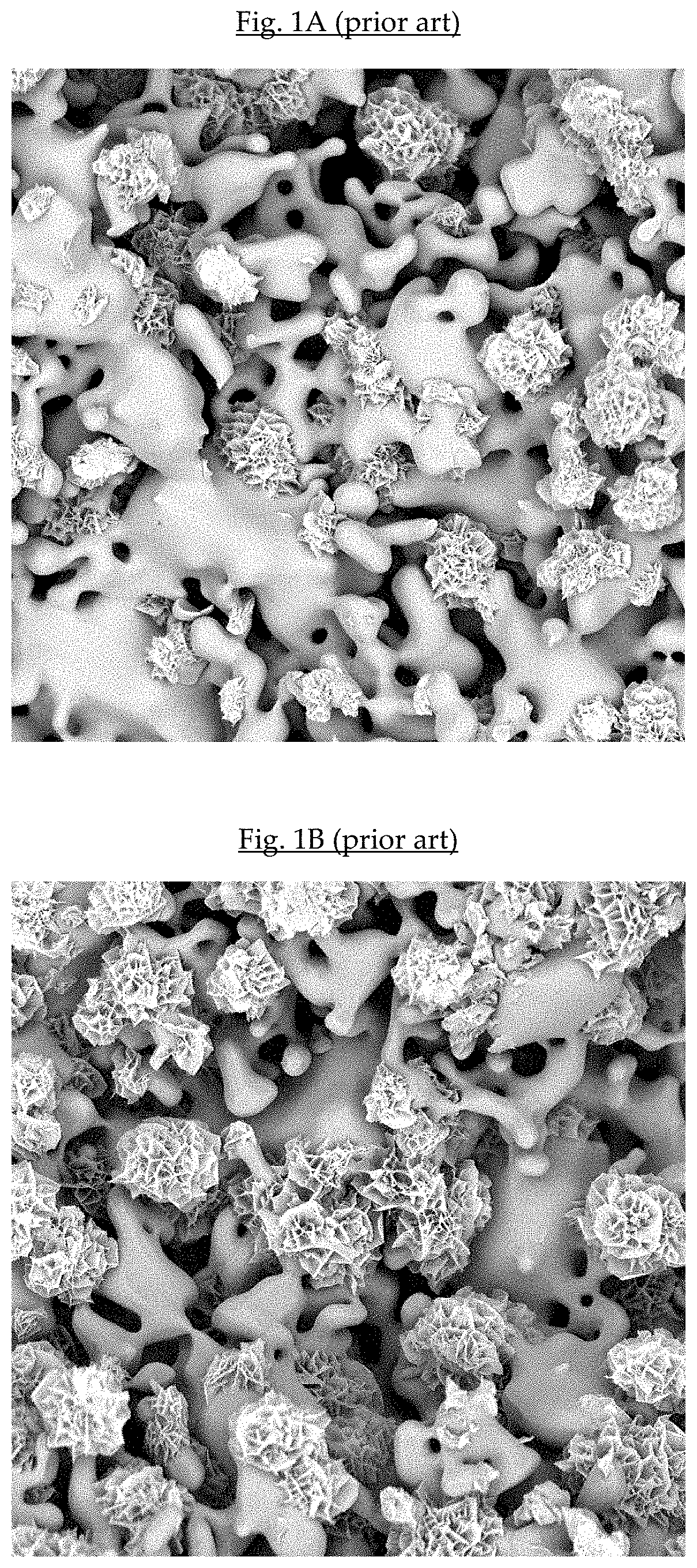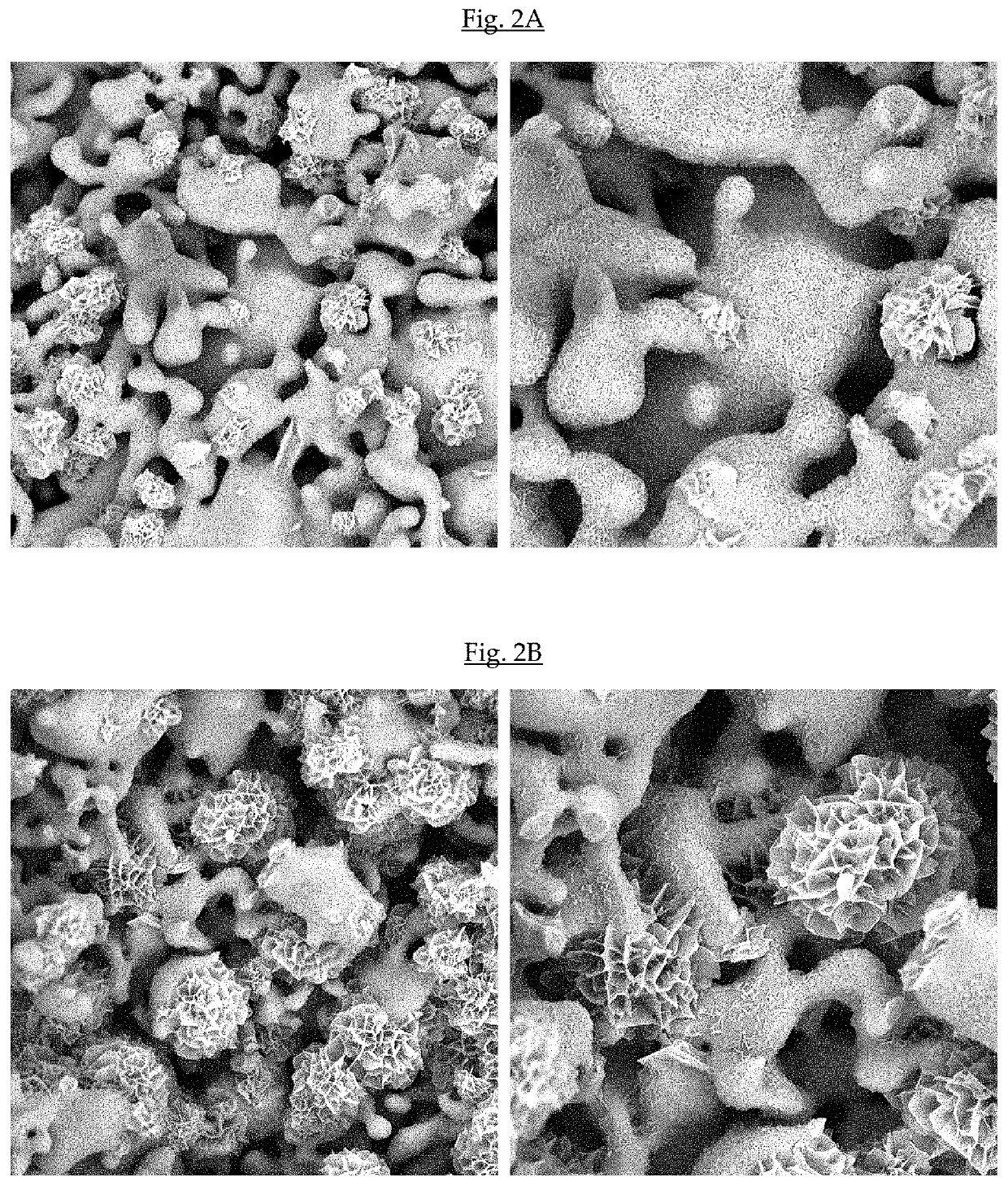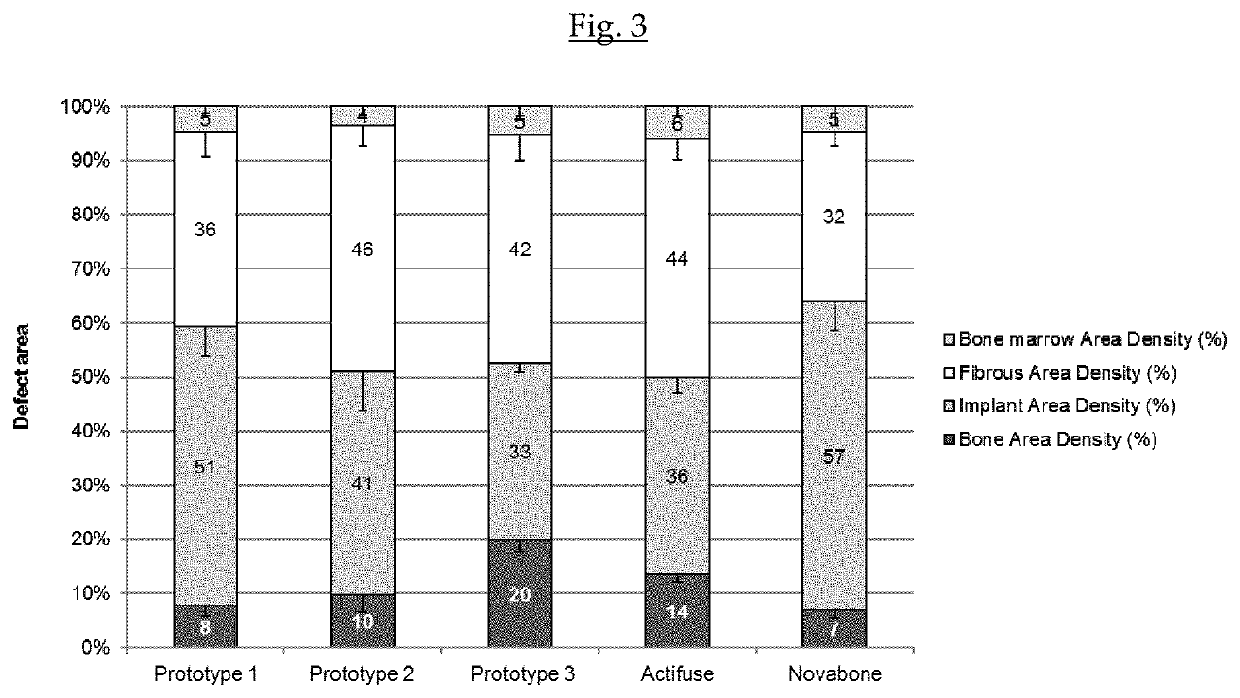Collagen matrix or granulate blend of bone substitute material
a collagen matrix and bone substitute technology, applied in the field of new collagen matrix, can solve the problems of increased osteoclast activity, increased risk of adverse inflammation reactions, accelerated ill-controlled resorption of ceramic materials, etc., and achieve the effect of excellent capacity to promote bone formation
- Summary
- Abstract
- Description
- Claims
- Application Information
AI Technical Summary
Benefits of technology
Problems solved by technology
Method used
Image
Examples
example 1 preparation
of Biphasic Calcium Phosphate / Hydroxyapatite (CAP / HAP) Bone Substitute Materials According to EP-B1-2445543
[0168]A bulk sintered material of alpha-TCP, porous granules thereof with a particle size of 1.0-2.0 mm and transformed granules having an epitactically grown HAP coating were prepared similarly to Examples 1, 2 and 4 of EP-B1-2445543. 364 g dicalcium phosphate anhydrous powder, 136 g calcium carbonate powder and 220 ml deionized water were mixed for 5 min at 700 rpm using a laboratory stirrer. The slurry from the mixing process was immediately transferred into a high temperature stable platinum cup. The filled platinum cup was placed in a cold furnace. The furnace was heated to 1400° C. by using a heating rate of 100° C. per hour. This temperature was kept for 12 hours and afterwards the furnace was cooled down to 800° C. with a cooling rate of 500° C. per hour, then cooled down to 300° C. with a cooling rate of 125° C. per hour and finally cooled down to room temperature by s...
example 2 preparation
of Biphasic Calcium Phosphate / Hydroxyapatite (CAP / HAP) Bone Substitute Materials According to Nternational PCT Patent Application WO-2019 / 115700
[0169]1-2 mm sized porous granules of phase pure α-TCP were produced according to above Example 1.
The phase transformation and coating step was performed in glass flasks placed in a water bath set to 40° C. The transformation buffer was a 0.4M aqueous solution of sodium dihydrogen phosphate (NaH2PO4) with a pH value of 7.45±0.1.
The glass flasks were filled with the transformation buffer and alpha-TCP granules were added with a ratio of 1:40 (granules to transformation solution). The granules were immersed in the transformation solution at 40° C. for 30 min (prototype 3) or 40 min (prototype 4). After immersing, the granules were rinsed 5 times with deionised water (granules to water ratio being 1:10 with respect to weight) and 2 times with Ethanol (99.9%, granules to ethanol ratio being 1:10 with respect to weight) to stop the phase transfor...
example 3
Testing in the Rabbit Femoral Condyle Defect Model
[0170]To assess the in-vivo performance of the newly developed bone substitute material, a femoral condyle model in the rabbit was chosen. The femoral condyle defect rabbit model is one of the most commonly used animal models to test bone substitute biomaterials (Li Y. et al. Bone defect animal models for testing efficacy of bone substitute biomaterials, Journal of Orthopaedic Translation (2015) 3, 94-104). Prototypes 1, 2 and 3 as well as competitor materials ACTIFUSE® and NOVABONE® were implanted in New Zealand white rabbits (28 weeks) in a critical sized defect (5 mm×10 mm) in the femoral condyle. After 3 weeks of implantation, the performance of the different biomaterials was analysed by measuring the bone area density, the implant area density, the fibrous area density and the bone marrow area density in the defect for the different prototypes. In order to do a quantitative analysis, the samples were fixed in 10% neutral buffere...
PUM
| Property | Measurement | Unit |
|---|---|---|
| sizes | aaaaa | aaaaa |
| size | aaaaa | aaaaa |
| diameter | aaaaa | aaaaa |
Abstract
Description
Claims
Application Information
 Login to View More
Login to View More - R&D
- Intellectual Property
- Life Sciences
- Materials
- Tech Scout
- Unparalleled Data Quality
- Higher Quality Content
- 60% Fewer Hallucinations
Browse by: Latest US Patents, China's latest patents, Technical Efficacy Thesaurus, Application Domain, Technology Topic, Popular Technical Reports.
© 2025 PatSnap. All rights reserved.Legal|Privacy policy|Modern Slavery Act Transparency Statement|Sitemap|About US| Contact US: help@patsnap.com



